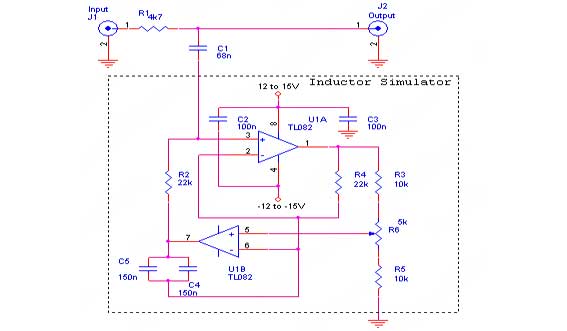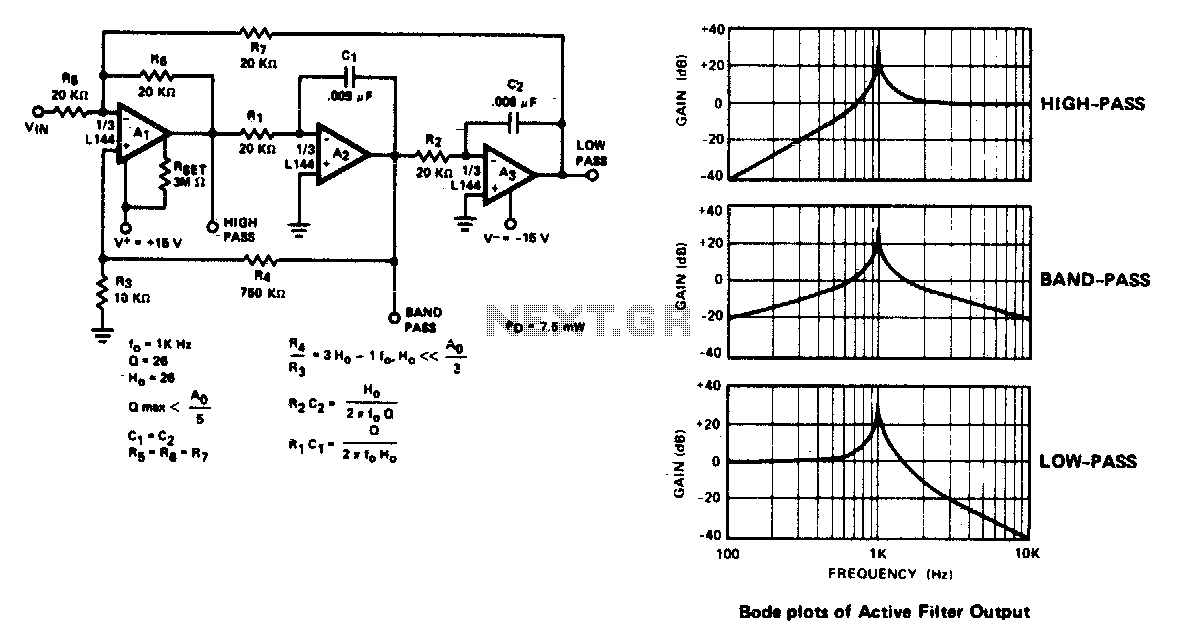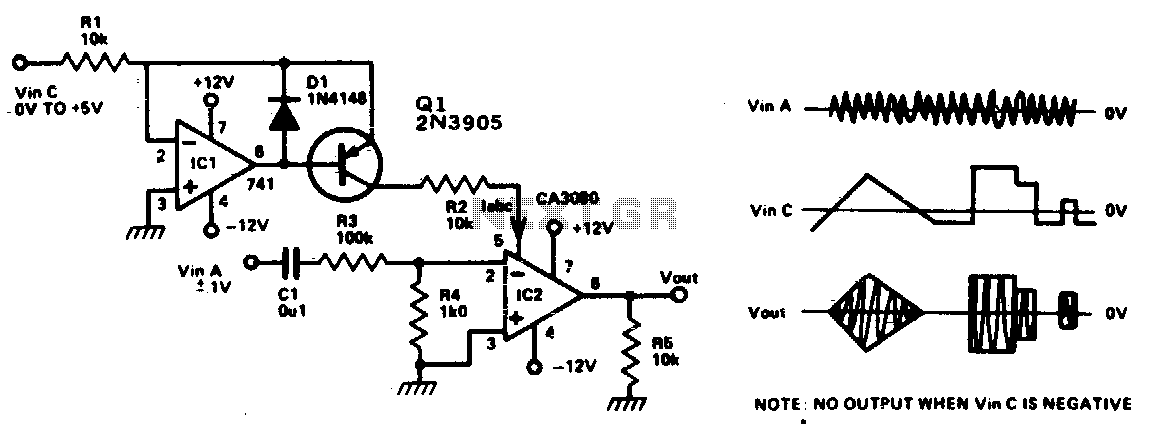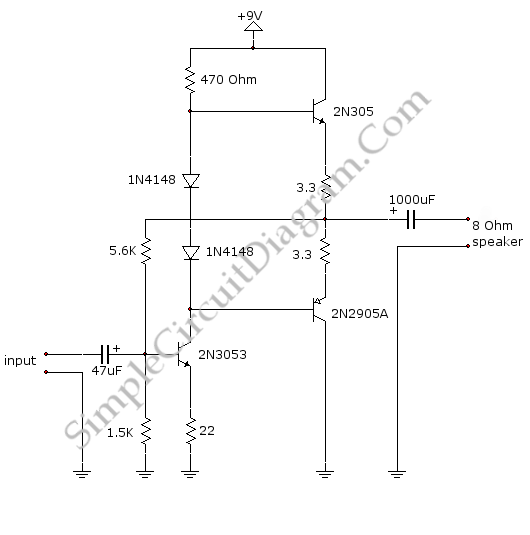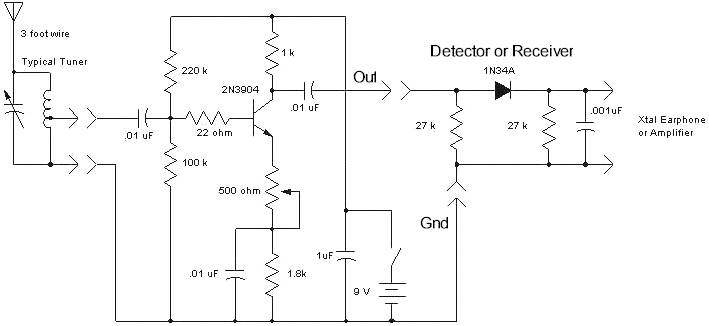
22 Watt Audio Amplifier
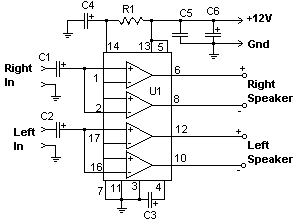
The 22 watt amp is easy to build, and very inexpensive. The circuit can be used as a booster in a car audio system, an amp for satellite speakers in a surround sound or home theater system, or as an amp for computer speakers. The circuit is quite compact and uses only about 60 watts. The circuit is not mine, it came from Popular Electronics. The circuit works best with 4 ohm speakers, but 8 ohm units will do. The circuit dissipates roughly 28 watts of heat, so a good heatsink is necessary. The chip should run cool enough to touch with the proper heatsink installed.
The 22-watt amplifier circuit is designed to provide efficient audio amplification for various applications, including automotive audio systems, home theater setups, and computer speaker systems. The circuit operates optimally with 4-ohm speakers, although it is compatible with 8-ohm speakers as well. The compact design of the amplifier allows for easy integration into existing systems without requiring significant modifications.
The amplifier circuit is built around a power amplifier IC, which is responsible for driving the output speakers. The choice of components is critical for achieving the desired performance, with capacitors and resistors selected to ensure stability and fidelity in sound reproduction. The power supply circuit typically requires a regulated DC voltage, which can be sourced from a transformer or a dedicated power supply unit.
Heat management is a crucial aspect of the amplifier design, as the circuit generates approximately 28 watts of heat during operation. To prevent overheating and ensure reliable performance, a heatsink must be employed. The heatsink should be appropriately sized to dissipate heat effectively, allowing the amplifier chip to remain at a safe operating temperature. It is advised that the heatsink be made from a thermally conductive material, such as aluminum or copper, and designed to provide sufficient surface area for heat dissipation.
In summary, this 22-watt amplifier circuit is a versatile, cost-effective solution for enhancing audio output in various environments. Its compact size, compatibility with different speaker impedances, and necessity for proper thermal management make it an excellent choice for audio enthusiasts looking to build their own amplification system.The 22 watt amp is easy to build, and very inexpensive. The circuit can be used as a booster in a car audio system, an amp for satellite speakers in a surround sound or home theater system, or as an amp for computer speakers. The circuit is quite compact and uses only about 60 watts. The circuit is not mine, it came from Popular Electronics. # The circuit works best with 4 ohm speakers, but 8 ohm units will do. # The circuit dissipates roughly 28 watts of heat, so a good heatsink is necessary. The chip should run cool enough to touch with the proper heatsink installed. # The circuit ope 🔗 External reference
The 22-watt amplifier circuit is designed to provide efficient audio amplification for various applications, including automotive audio systems, home theater setups, and computer speaker systems. The circuit operates optimally with 4-ohm speakers, although it is compatible with 8-ohm speakers as well. The compact design of the amplifier allows for easy integration into existing systems without requiring significant modifications.
The amplifier circuit is built around a power amplifier IC, which is responsible for driving the output speakers. The choice of components is critical for achieving the desired performance, with capacitors and resistors selected to ensure stability and fidelity in sound reproduction. The power supply circuit typically requires a regulated DC voltage, which can be sourced from a transformer or a dedicated power supply unit.
Heat management is a crucial aspect of the amplifier design, as the circuit generates approximately 28 watts of heat during operation. To prevent overheating and ensure reliable performance, a heatsink must be employed. The heatsink should be appropriately sized to dissipate heat effectively, allowing the amplifier chip to remain at a safe operating temperature. It is advised that the heatsink be made from a thermally conductive material, such as aluminum or copper, and designed to provide sufficient surface area for heat dissipation.
In summary, this 22-watt amplifier circuit is a versatile, cost-effective solution for enhancing audio output in various environments. Its compact size, compatibility with different speaker impedances, and necessity for proper thermal management make it an excellent choice for audio enthusiasts looking to build their own amplification system.The 22 watt amp is easy to build, and very inexpensive. The circuit can be used as a booster in a car audio system, an amp for satellite speakers in a surround sound or home theater system, or as an amp for computer speakers. The circuit is quite compact and uses only about 60 watts. The circuit is not mine, it came from Popular Electronics. # The circuit works best with 4 ohm speakers, but 8 ohm units will do. # The circuit dissipates roughly 28 watts of heat, so a good heatsink is necessary. The chip should run cool enough to touch with the proper heatsink installed. # The circuit ope 🔗 External reference
